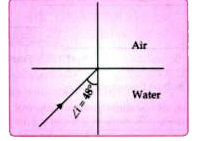Comment on the below statement
Bragg reflection can occur only when γ≤2d.
The correct Answer is:T
To comment on the statement "Bragg reflection can occur only when γ≤2d", we need to analyze the conditions under which Bragg's law is satisfied.
1. Understanding Bragg's Law:
Bragg's law is given by the equation:
nλ=2dsinθ
where:
- n is the order of reflection (an integer),
- λ is the wavelength of the incident wave,
- d is the distance between the crystal planes,
- θ is the angle of incidence.
2. Analyzing the Condition:
For Bragg reflection to occur, the sine function must yield a valid output. The sine function, sinθ, can only take values between -1 and 1. Therefore, we can derive the following condition from Bragg's law:
nλ=2dsinθ⟹sinθ=nλ2d
This implies that:
−1≤sinθ≤1
Thus, we need:
−1≤nλ2d≤1
3. Deriving the Wavelength Condition:
From the above inequality, we can derive:
−2d≤nλ≤2d
Since n is a positive integer (for the first order reflection, n=1), we can simplify this to:
0≤nλ≤2d
This leads us to conclude that:
λ≤2d
4. Conclusion:
Therefore, the statement "Bragg reflection can occur only when γ≤2d" is indeed true, as γ represents the wavelength λ. The condition λ≤2d is necessary for Bragg reflection to occur.
Final Comment:
The statement is true because Bragg reflection is only possible when the wavelength of the incident wave is less than or equal to twice the distance between the crystal planes.
Bragg's law is given by the equation:
nλ=2dsinθ
where:
- n is the order of reflection (an integer),
- λ is the wavelength of the incident wave,
- d is the distance between the crystal planes,
- θ is the angle of incidence.
For Bragg reflection to occur, the sine function must yield a valid output. The sine function, sinθ, can only take values between -1 and 1. Therefore, we can derive the following condition from Bragg's law:
nλ=2dsinθ⟹sinθ=nλ2d
This implies that:
−1≤sinθ≤1
Thus, we need:
−1≤nλ2d≤1
From the above inequality, we can derive:
−2d≤nλ≤2d
Since n is a positive integer (for the first order reflection, n=1), we can simplify this to:
0≤nλ≤2d
This leads us to conclude that:
λ≤2d
Therefore, the statement "Bragg reflection can occur only when γ≤2d" is indeed true, as γ represents the wavelength λ. The condition λ≤2d is necessary for Bragg reflection to occur.
The statement is true because Bragg reflection is only possible when the wavelength of the incident wave is less than or equal to twice the distance between the crystal planes.
Topper's Solved these Questions
- SOLID STATEBook:CENGAGE CHEMISTRY ENGLISHChapter:SOLID STATEExercise:Exercises (Archives ) Linked Comprehension
Explore 3 Videos
- SOLID STATEBook:CENGAGE CHEMISTRY ENGLISHChapter:SOLID STATEExercise:Exercises (Archives ) Multiple Correct
Explore 2 Videos
- SOLID STATEBook:CENGAGE CHEMISTRY ENGLISHChapter:SOLID STATEExercise:Exercises (Fill In The Blanks)
Explore 15 Videos
- REDUCTION AND OXIDATION REACTION OF ORGANIC COMPOUNDSBook:CENGAGE CHEMISTRY ENGLISHChapter:REDUCTION AND OXIDATION REACTION OF ORGANIC COMPOUNDSExercise:SUBJECTIVE TYPE
Explore 4 Videos
- SOLUTIONSBook:CENGAGE CHEMISTRY ENGLISHChapter:SOLUTIONSExercise:Ex 2.3 (Objective)
Explore 9 Videos
Similar Questions
Inspiration can occur , when -
View SolutionConvection can occur only in fluids.
View SolutionTotal internal reflection can take only if
View SolutionComment on the below statement
TVs and OVs both are found is hcp and simple cube.
View SolutionInspiration can take place only when:
View SolutionFill in the blanks:
Q: Total internal reflection occurs only when a ray of light passes from a _____medium to a ____medium.
View SolutionComment over the following statement
Ga2O3 is an amphoteric oxide.
View SolutionComment over the following statement
The ratio of atoms can vary in differently prepared samples of a compound.
View SolutionComment on below statement
In bcc lattice, the atoms at the corners of the unit cell are in contact with each other.
View SolutionA ray of light travels from water to air as shown in the diagram given below:

State the condition so that total internal reflection occurs in the above diagram.
View Solution